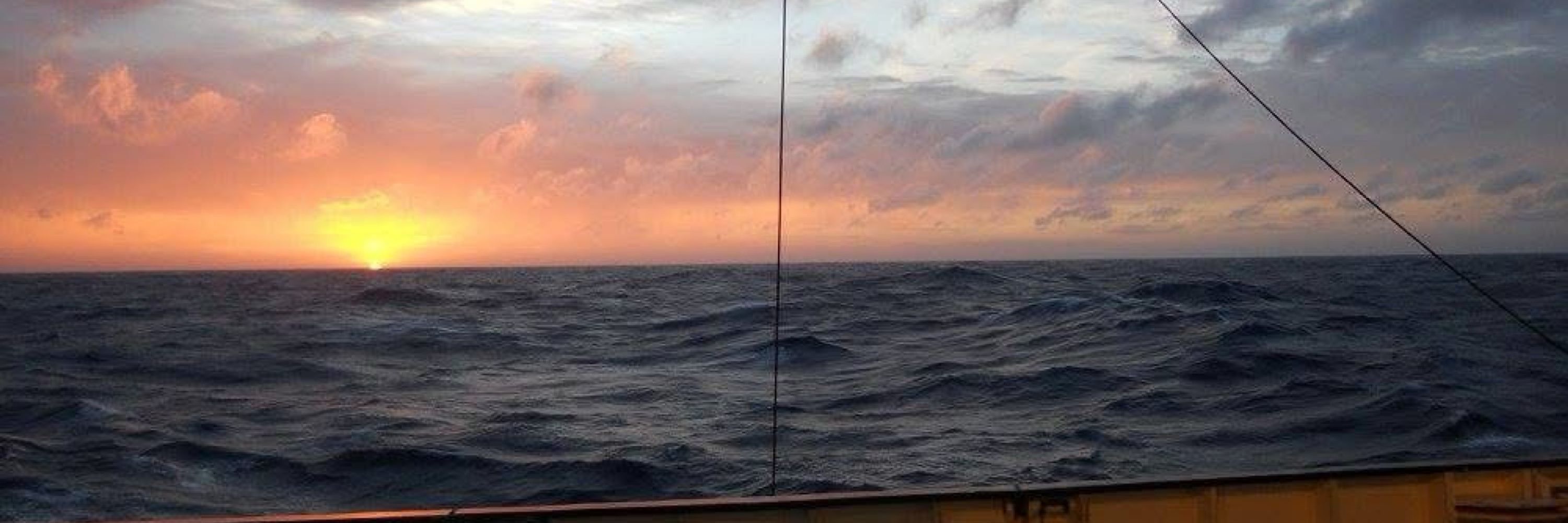
Exploring AMOC and global ocean circulation |
Views are my own | https://linktr.ee/jonbakerocean

Unlikely before 2100—but the risks are real 🚨
We find Southern Ocean winds keep this vital ocean "heat engine" running, even under extreme #climatechange. But the Pacific holds a surprise…
tinyurl.com/yt6u4e7d
Let’s explore 🧪👇
Including it as forcing may lead to more realistic simulation of surface temperature and sea ice trends🧊🌊 (1/7)
gmd.copernicus.org/articles/18/...

Including it as forcing may lead to more realistic simulation of surface temperature and sea ice trends🧊🌊 (1/7)
gmd.copernicus.org/articles/18/...

gmd.copernicus.org/articles/18/...
"The role of the northwest Atlantic boundary current in the meridional overturning circulation". This is an @o-snap.org related study about the AMOC.
@marineinstitute.bsky.social
@oceanaccess.bsky.social
More information here: www.mi.mun.ca/media/marine...
"The role of the northwest Atlantic boundary current in the meridional overturning circulation". This is an @o-snap.org related study about the AMOC.
@marineinstitute.bsky.social
@oceanaccess.bsky.social
More information here: www.mi.mun.ca/media/marine...
Song et al. use it on CMIP6 PMIP glacial models and find these pathways shape the AMOC response - confirming our earlier idealised results for glacial climates 🌊
www.nature.com/articles/s41...

Song et al. use it on CMIP6 PMIP glacial models and find these pathways shape the AMOC response - confirming our earlier idealised results for glacial climates 🌊
www.nature.com/articles/s41...
Over the past six decades, the warming of the 0-700 m Atlantic-Indian sector was 40.0 ± 5.7% faster than the Pacific sector, nearly doubling at ~44°S.
www.nature.com/articles/s41...

Over the past six decades, the warming of the 0-700 m Atlantic-Indian sector was 40.0 ± 5.7% faster than the Pacific sector, nearly doubling at ~44°S.
www.nature.com/articles/s41...
Our Nature paper didn’t “redefine” collapse — there’s no single threshold, though ~6 Sv is common.
We used 0 Sv only for extreme 4×CO₂ runs (full shutdown).
Under real-world forcing, models stay above 6 Sv this century — no collapse.
Clarified 🌊👇
Our Nature paper didn’t “redefine” collapse — there’s no single threshold, though ~6 Sv is common.
We used 0 Sv only for extreme 4×CO₂ runs (full shutdown).
Under real-world forcing, models stay above 6 Sv this century — no collapse.
Clarified 🌊👇
Job posting now live: jobs.ncsu.edu/postings/223... 🌊
Job posting now live: jobs.ncsu.edu/postings/223... 🌊
We find that an AMOC collapse is unlikely this century as Southern Ocean winds pull deep waters to the surface, stabilising it in a weakened state.
Still, the global ocean circulation is expected to change greatly as the planet warms 🌊

We find that an AMOC collapse is unlikely this century as Southern Ocean winds pull deep waters to the surface, stabilising it in a weakened state.
Still, the global ocean circulation is expected to change greatly as the planet warms 🌊
We find an observational constraint implying more future global ocean heat uptake, cloud feedback, and warming than the CMIP6 mean.
This contrasts with previous estimates based on past warming trends.
🔗 esd.copernicus.org/articles/16/...

We find an observational constraint implying more future global ocean heat uptake, cloud feedback, and warming than the CMIP6 mean.
This contrasts with previous estimates based on past warming trends.
🔗 esd.copernicus.org/articles/16/...
Linus & I developed the idea during Linus research visit with me at @whoi.edu and turned it then into this paper:
esd.copernicus.org/articles/16/...

Linus & I developed the idea during Linus research visit with me at @whoi.edu and turned it then into this paper:
esd.copernicus.org/articles/16/...
Using a suite of Earth system models, Maddie Shankle et al show that better ventilation of intermediate waters in the North Pacific ends up reducing outgassing of CO2 in the Southern Ocean 🌊🧪⚒️🧵 @earthscista.bsky.social
www.nature.com/articles/s41...

Using a suite of Earth system models, Maddie Shankle et al show that better ventilation of intermediate waters in the North Pacific ends up reducing outgassing of CO2 in the Southern Ocean 🌊🧪⚒️🧵 @earthscista.bsky.social
www.nature.com/articles/s41...
Our new study in Nature Climate Change quantifies this unexpected decline and explains how it came about. 👇
doi.org/10.1038/s415...

Our new study in Nature Climate Change quantifies this unexpected decline and explains how it came about. 👇
doi.org/10.1038/s415...
Our Nature study suggests collapse is unlikely this century — but the risks remain critical.
🗓️ 2 Sept, 14:00–15:00 CEST
👉 tum-conf.zoom.us/j/6933421034...

Our Nature study suggests collapse is unlikely this century — but the risks remain critical.
🗓️ 2 Sept, 14:00–15:00 CEST
👉 tum-conf.zoom.us/j/6933421034...
It shows AMOC collapse risks increase after 2100, particularly in extreme high-end scenarios, but also in a few lower ones.
We need more climate model simulations that run beyond 2100 to assess these risks properly 🌊

It shows AMOC collapse risks increase after 2100, particularly in extreme high-end scenarios, but also in a few lower ones.
We need more climate model simulations that run beyond 2100 to assess these risks properly 🌊
New research led by @jonbakerocean.bsky.social in @nature.com challenges that: shutdown this century is unlikely.
But weakening is real, and risky. 🧵 www.nature.com/articles/s41...

New research led by @jonbakerocean.bsky.social in @nature.com challenges that: shutdown this century is unlikely.
But weakening is real, and risky. 🧵 www.nature.com/articles/s41...
Session ID: 259677
Title: HE009 – Overturning circulation and water mass transformation in the northern oceans
Topic Area: High Latitude Environments
lnkd.in/dw5nmNRF
We are looking for someone with a MSc in physical oceanography, fluid dynamics or physics to study how ocean eddies contribute to the Atlantic Meridional Overturning Circulation

We are looking for someone with a MSc in physical oceanography, fluid dynamics or physics to study how ocean eddies contribute to the Atlantic Meridional Overturning Circulation
I’m excited to be speaking at the next ClimTip webinar on what our recent Nature study reveals about AMOC collapse risk, and why its future remains a critical concern.
📅 2 Sep | 14:00–15:00 CEST
Hear from lead author @jonbakerocean.bsky.social in our next webinar.
📅 2 Sep 2025, 2–3PM CEST
🔗 bit.ly/climtip-webi...

I’m excited to be speaking at the next ClimTip webinar on what our recent Nature study reveals about AMOC collapse risk, and why its future remains a critical concern.
📅 2 Sep | 14:00–15:00 CEST
Hear from lead author @jonbakerocean.bsky.social in our next webinar.
📅 2 Sep 2025, 2–3PM CEST
🔗 bit.ly/climtip-webi...

Hear from lead author @jonbakerocean.bsky.social in our next webinar.
📅 2 Sep 2025, 2–3PM CEST
🔗 bit.ly/climtip-webi...
In this new Met Office video, I share insights from our Nature paper on how Southern Ocean winds may help prevent an AMOC collapse as the planet warms 🎥 🌊

In this new Met Office video, I share insights from our Nature paper on how Southern Ocean winds may help prevent an AMOC collapse as the planet warms 🎥 🌊


It was a pity #EGU25 didn't give more time for some to and fro at the session.
Next year?
bsky.app/profile/jonb...
We’ve also clarified this on social media and in my EGU talk just before Stefan’s interview.
It was a pity #EGU25 didn't give more time for some to and fro at the session.
Next year?
bsky.app/profile/jonb...
We’ve also clarified this on social media and in my EGU talk just before Stefan’s interview.
It was a pity #EGU25 didn't give more time for some to and fro at the session.
Next year?
bsky.app/profile/jonb...

